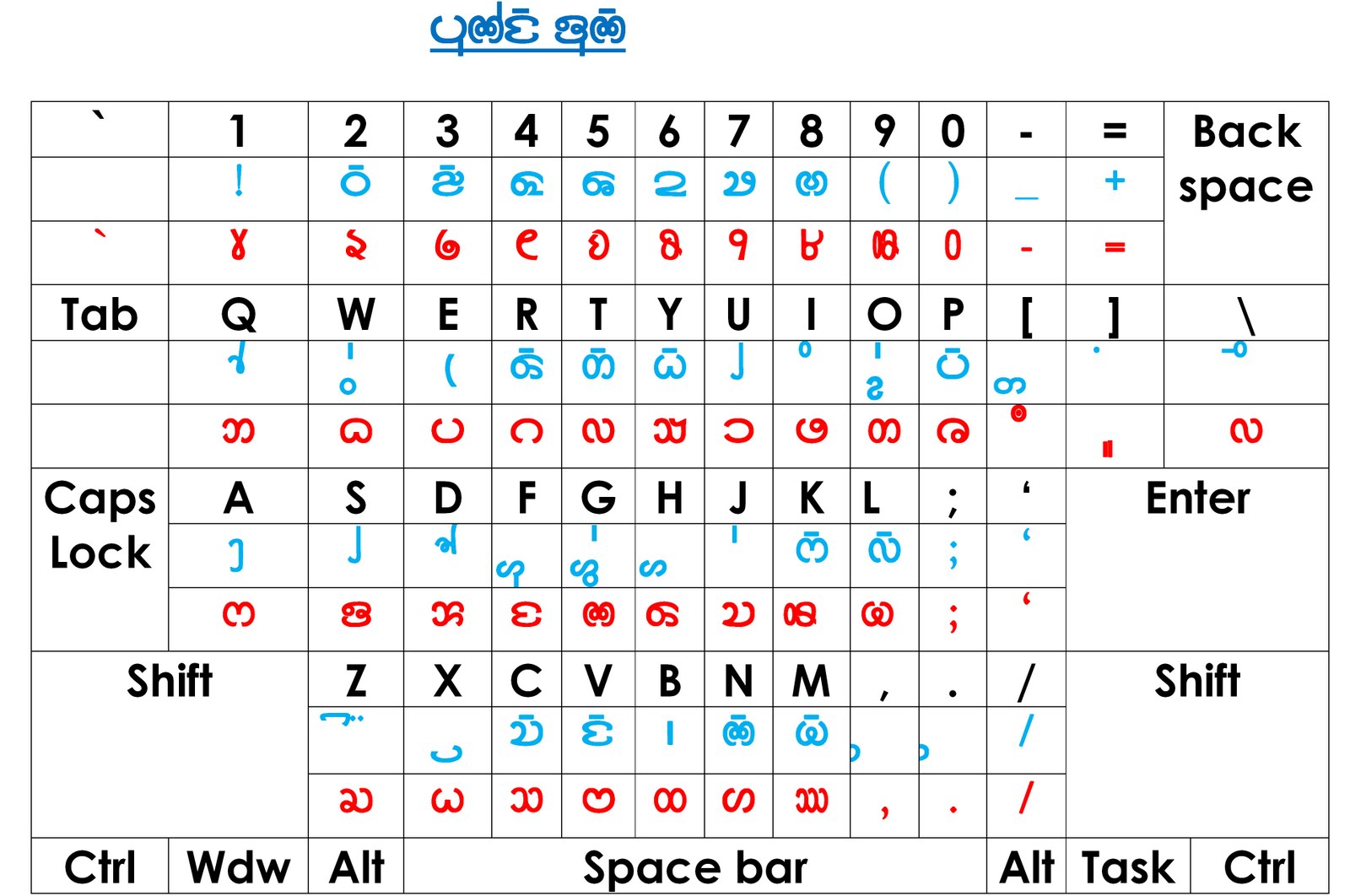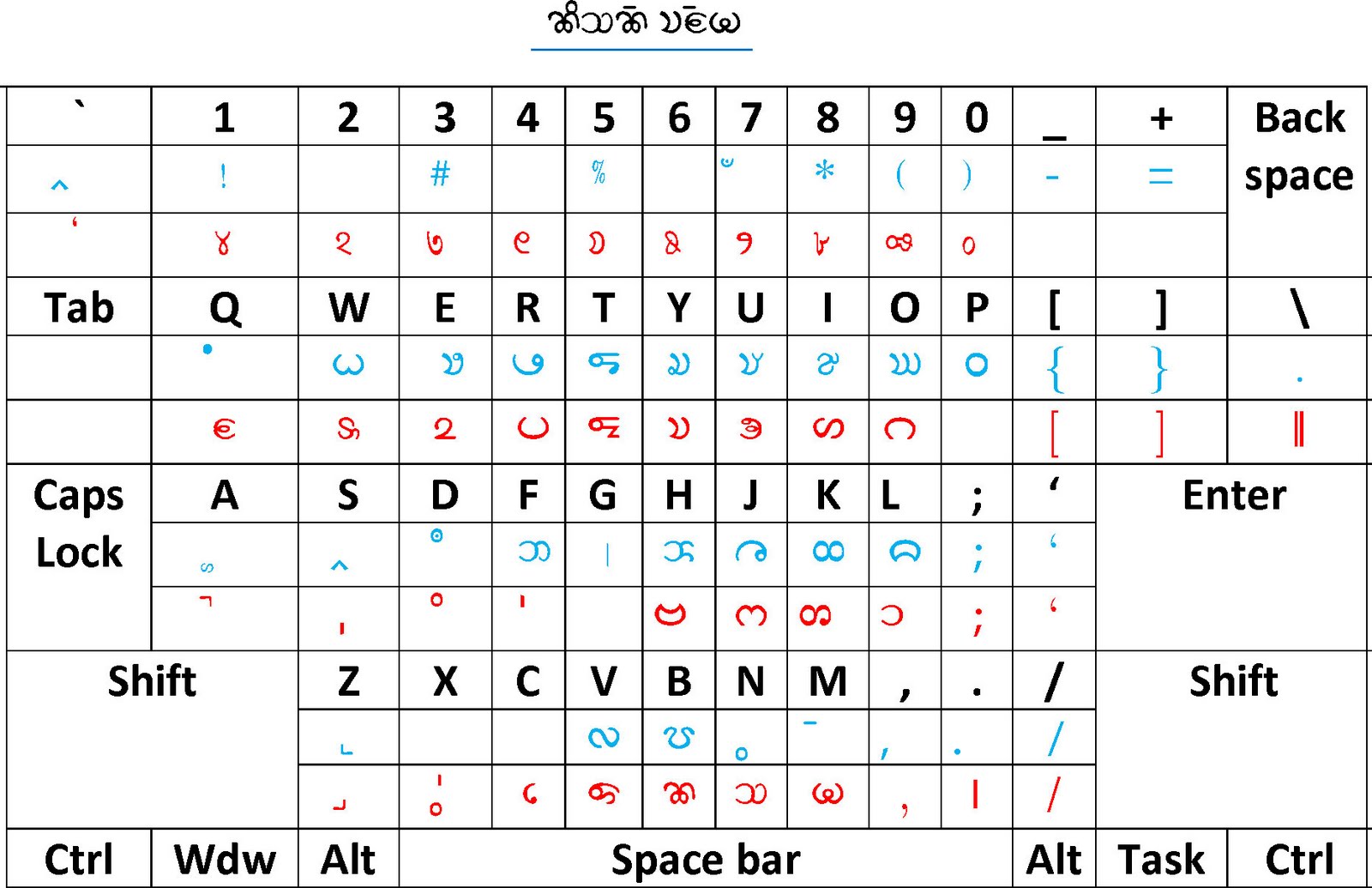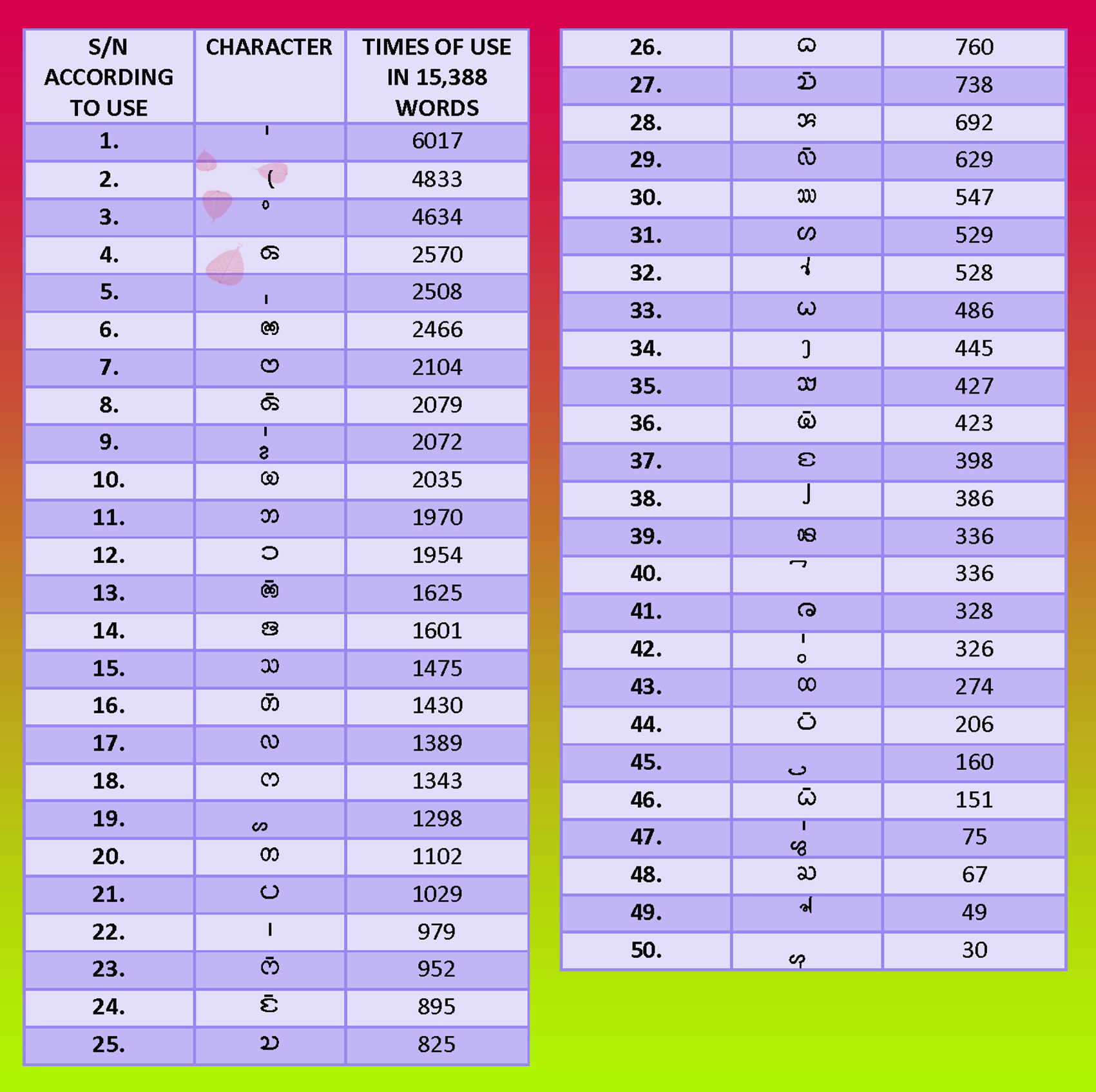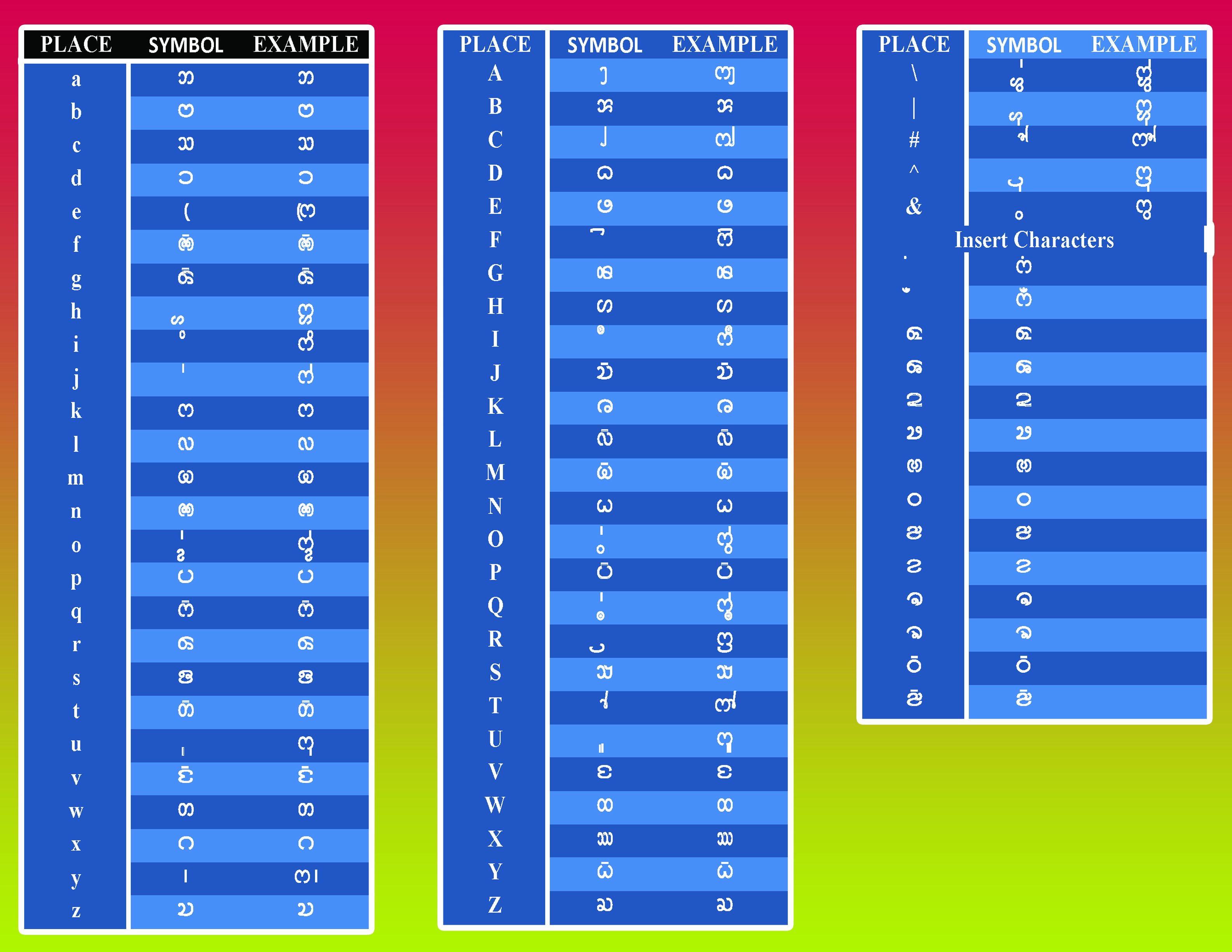The most used Chakma fonts in India are Chakma(SuJayan) created by Dangu Er. Jayan Chakma and Sujoy Chakma and Punongjun created by Dangu Er. Jayan Chakma. District School Education Board, Chakma Autonomous District Council (CADC), Mizoram is using Chakma(SuJayan) in their Text Books and here in Tripura we are using Punongjun. In Dechhul (CHTs), Indigenous Cultural Institute, Rangamatye used Chadigang fonts in its Text Books. Recently, Bivuti Chakma and Jyoti Chakma of Ribeng IT Solutions, Rangamatye developed Alaam fonts in collaborating with Indigenous Cultural Institute. They were also successfully developed the only Chakma Unicode font RibengUni. Earlier, there were two fonts in use in Dechhul namely BijoyGiri DPC (created by Deba Priya Chakma) and NishanChakma.
It means, by 2012, we are having at least five ASCII (American Standard Code for Information Interchange) fonts and one Unicode font to write in Chakma. But the problem is. we cannot use all the fonts easily due to different keyboard layouts of each font. The font developers did not followed a fixed pattern while placing fonts in the keyboard. As example, if we learn `a s d f g / ; l k j h’ formula for English typing, we can use all the fonts available in Roman scripts. Similarly, if we learn `Bijoy’ in Bengali, we can use almost all fonts available for writing in Bengali except Amar Bangla, Satyajit and some other minor systems. But in Chakma,
every time we want to use a new font for designing or for some other reasons, we have to learn the new font’s keyboard layout first, which is a time consuming and irritating process.
every time we want to use a new font for designing or for some other reasons, we have to learn the new font’s keyboard layout first, which is a time consuming and irritating process.
Now, what is the solution? This paper tries to search for a proper solution for it and proposes a new keyboard layout for a broader consensus. Before that, let us have a look at the present keyboard layouts used by the different Chakma font creators.
Keyboard layouts of Chakma fonts can be broadly divided in to three groups :
(1) 𑄇𑄎𑄞𑄋𑄚 group: This group used a easy formula in their layouts just like qwerty in case of English keyboard layout. Chakma(SuJayan) and Punongjun falls under this group. In this system prominent fonts were placed in prominent places and vowel strokes were put (with Shift option) as per their articulation, eg. 𑄨 (Banhi dena) at I and 𑄪 (Ek tan) at U etc. Sometimes, the vowel strokes were placed as per their appearance like 𑄨 (Banhi dena) was placed at O in Chakma(SuJayan).

(2) BijoyGiri group: This layout solely rested upon the pronunciation of the fonts and placed them keeping in mind the similarity with English fonts, eg. 𑄇 at k, 𑄈 at K, 𑄃 at a etc. This is identical with Amar Bangla layout in Bengali. BijoyGiriDPC and Chadigang falls under this group.

(3) Bijoy group: Mostafa Jabbar, the famous developer of Bengali writing software `Bijoy’ included a incomplete set of Chakma fonts namely Bijoy Changma in his Bijoy software. He used Bijoy keyboard layout in Bijoy Changma also which was created especially for typing in Bengali. Later on the Chakma font creators followed the layout. NishanChakma, Alaam and RibengUni are based on this layout.

You can see a comparison between different layouts in the chart below.

The question is can’t we create a unified layout for all Chakma fonts ? We asked the question to Dangu Bivuti Chakma, co-creator of Alaam and RibengUni in November 2012 when he released RibengUni. While Dangu Bivuti readily agreed to our proposal but he insisted for a consensus through a conference/seminar between Indian and Bangladeshi Chakmas which involves a substantial amount of time and money. Then what to do ? We tried to search for a middle path to avoid those constrains. We prepared a layout, then mailed it to Bivuti to review the same in Ribeng IT Solutions. After their approval, we named it MaadiRibeng Layout and tried to use it in Punongjun font. No doubt we found it excellent.
What is the basis of this new layout ? Before going to that let us have a look at the English keyboard layout. The top 5 most used English characters are e, a, t, i & n followed by o, r, s, h, l, d, m, u, c, g respectively. It is clear that these frequently used characters were place without shift and in the prominent zone of the keyboard. Similarly, we have to place our most used characters without shift and divide the load equally between left and right hand for easy typing. So, we tried to find out the most used characters in Chakma scripts.

The MAADI team conducted a detailed survey of 145 Chakma articles with 15,388 words published in MAADI and other publications to find out the most used Chakma characters. Study revealed that the top ten used Chakma characters are Ubor tulye (𑄧), E kar (𑄬), Banhi dye (𑄨) Ra (𑄢), Ek tan (𑄪), Na (𑄚), Ba (𑄝), Ra machye (𑄢𑄴), O kar (𑄳𑄅𑄧) and Ma (𑄟) (details are in the above chart). So, we must place these characters without shift for speedy typing. It was the principle guideline in preparing MaadiRibeng Layout combined with pronunciation theory for easy memorization of the layout. Below is the proposed layout :


We request the respected Chakma font creators to review the layout and suggest appropriate alternations. We must agree to a common layout as soon as possible and change the layouts of the existing fonts as per a common layout to make them user friendly. It is also felt that more and more fonts with different looks are needed to add variety in the Chakma Scripts Store. We must give rounds of applause to the Chakma font creators which maybe the greatest achievement by the Chakmas by the beginning of the twenty second millennium.

No comments:
Post a Comment